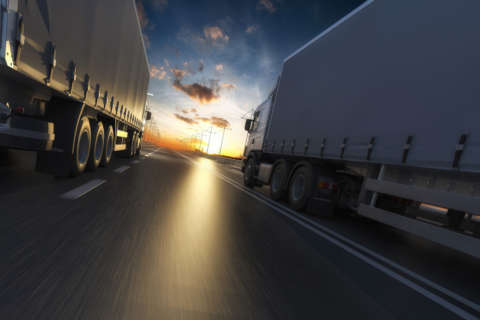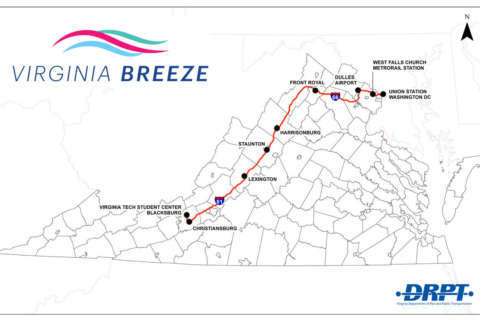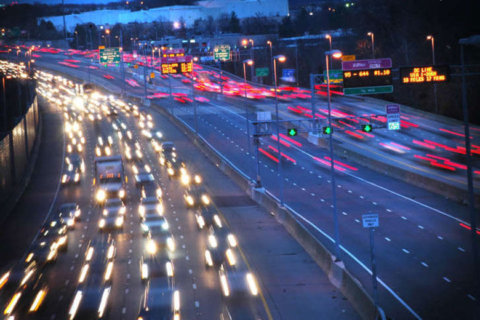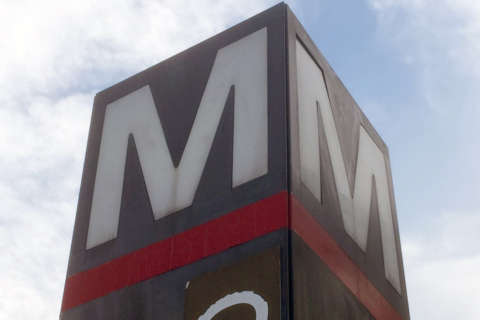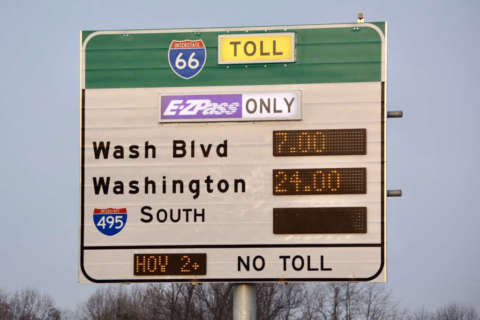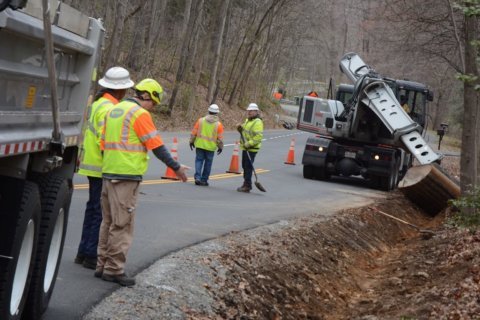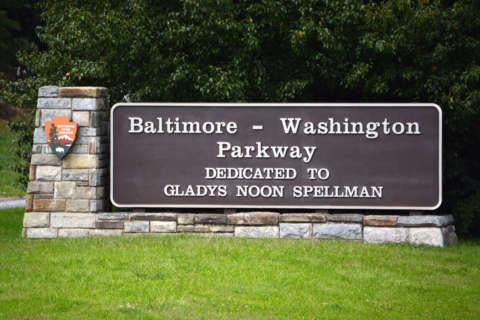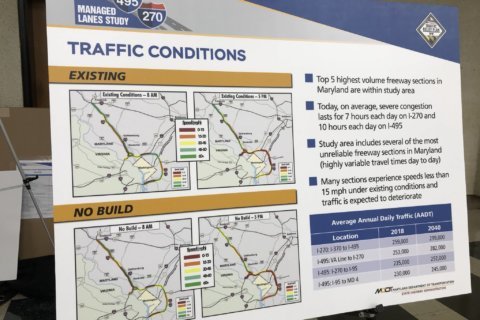WASHINGTON — Drones floating above the interstate could be as integral as new tolling or gas taxes are to significant changes planned to deal with Interstate 81 backups that can leave drivers sitting at a standstill for hours.
Unlike other interstates in Virginia, delays on the approximately 325 miles of I-81 are most often due to crashes or other incidents that block lanes. In other parts of the state, delays are usually more predictable due to congestion from rush-hour or other traffic.
The difference is expected to lead to some unique possible solutions to the mileslong backups on I-81 that can last eight hours or longer following a serious crash with an overturned tractor-trailer. The General Assembly has directed Virginia’s Commonwealth Transportation Board to report back with proposals by early January.
“I want to stress, there are more identified problems and potential solutions than there will be money, no matter what potential financing options you pick,” Deputy Transportation Secretary Nick Donohue told the board last week.
Currently, most delays between interchanges are between Christiansburg and Roanoke, followed by the area around the I-66 merge, with a third spike between Staunton and Harrisonburg. People who drive on the corridor complain about excessive speeding and the significant proportion of truck traffic, among other issues.
“When you go from Christiansburg going north down to the bottom, you take your life in your hands,” Commonwealth Transportation Board member Bert Dodson said.
What would fixes cost?
After any enforcement efforts, new drone cameras and message board signs, capital construction projects would be funded with revenue left over after paying for operational improvements such as better cameras and communication to drivers about crashes or lane closures ahead.
Initial proposed fixes for the top 20 percent of problem areas are due to be presented at public meetings in late August. The ideas will be rated based on cost effectiveness and benefit this fall.
At the public meetings next month, the state also plans to present estimates of how much certain tolling plans could raise or what a dedicated regional gas tax in the corridor could add, Donohue said.
The General Assembly directed the study to consider implementing tolls only on trucks, or through the addition of HOV or toll lanes similar to those on I-95 or the Capital Beltway. The study is not allowed to consider tolling options that apply only to commuters, and tolls along I-81 could only be implemented with explicit legislative approval.
Whatever the funding source, the ideas for improvements include widening selected parts of I-81 where there is recurring congestion or adding truck-climbing lanes in certain areas, expanding interchanges to add more space to merge, and possible improvements to routes that would be used as detours in the event of a crash.
Could drones lead to faster crash cleanup, quicker detours?
There is a significant focus on simply speeding up crash cleanup and better handling incidents and operations.
“Can we use drones to get visibility out on that corridor in a better way than we have today, and might that be cheaper and more cost effective and quicker candidly than putting up cameras everywhere?” Donohue said.
A new Virginia law permits the use of drones for crash reconstruction, which could eliminate the need to wait several hours for investigators to survey the scene of a crash with serious or fatal injuries before the vehicles can be cleared off the road.
“You can use a drone to much more quickly surveil that scene and then clear the incident off the roadway, which could potentially cut the number of hours a lane is closed dramatically from several to hopefully two or less in a lot of those circumstances, creating a big benefit for folks,” Donohue said.
Virginia State Police, the Virginia Department of Transportation and researchers at the University of Virginia and the Virginia Tech Transportation Institute are working together on potential ways to implement the drone crash reconstruction program and additional drone camera systems.
The state is also considering changes to towing policies to pay more to companies that get vehicles off the road more quickly, or to keep specialized tow trucks on call to haul overturned big rigs off the road faster.
“I don’t think you’ve ever heard us talk this much about operations or the use of technology or other types of strategies that … aren’t just pavement or buses,” Donohue said.
A drone functioning effectively as a traffic camera could let VDOT’s traffic operations center identify a crash before slowdowns begin so that drivers could be notified to detour at the preceding exit — if VDOT adds more message boards along the corridor. The drone could be tethered to the ground.
Don’t expect changes all at once
The wide range of issues means any tolling or other changes could be phased in, Virginia Transportation Secretary Shannon Valentine said.
Tolls could help fund more state troopers to enforce speeding and other traffic laws, though, to address complaints along the corridor, VDOT Commissioner Stephen Brich said.
He sees operations plans as the key to nearer-term fixes, which would include information about any upgrades needed for alternative routes drivers would use when told to avoid a crash ahead. That could include larger intersections, better traffic signal timing, or longer merge lanes on those parallel routes.
“But I also think along the 81 corridor itself, it’s the strategic placement of cameras, surveillance devices, as well as the message boards to be able to alert vehicles well in advance of any interchanges,” Brich said.
“Part of this operations plan is going to be making sure that we have traveler information in real time as well as the strategic deployment of our surveillance devices out there,” he added.
Getting more information out to drivers more quickly is something Virginia is looking to improve statewide, Valentine said.

